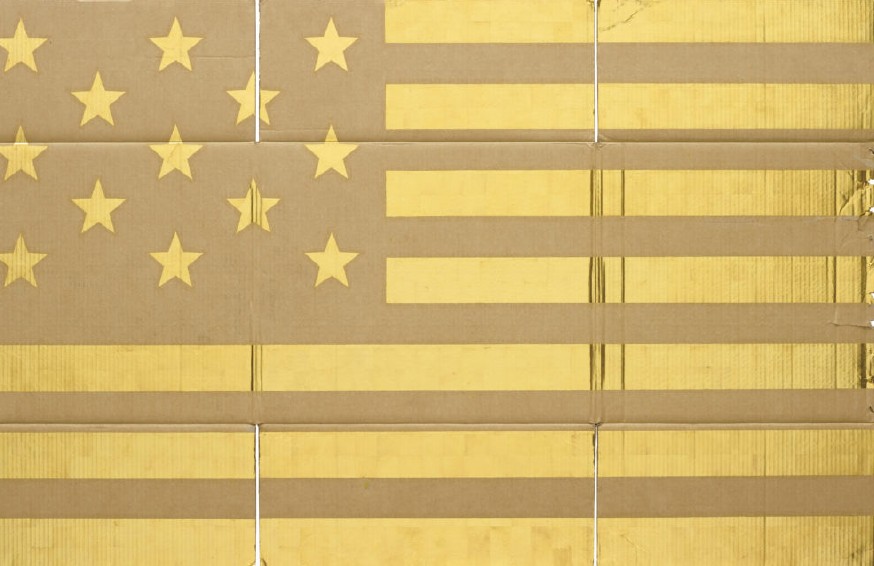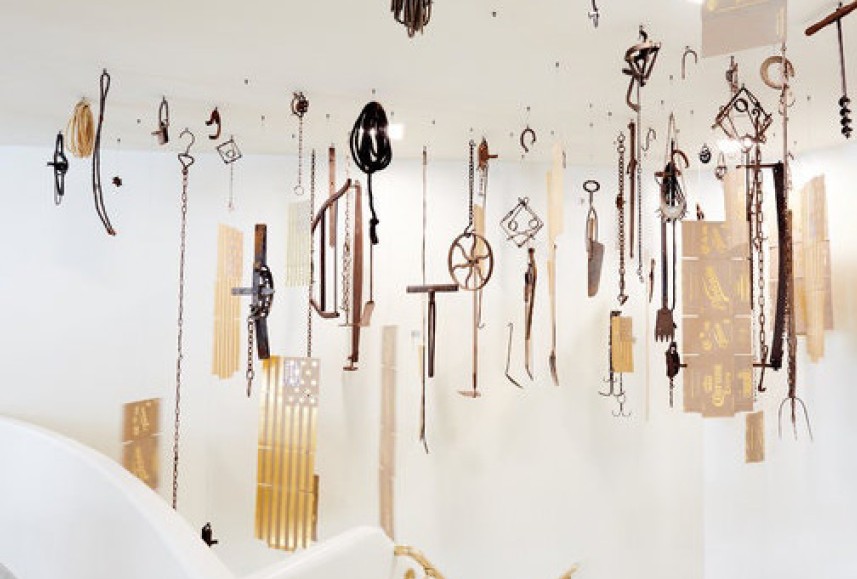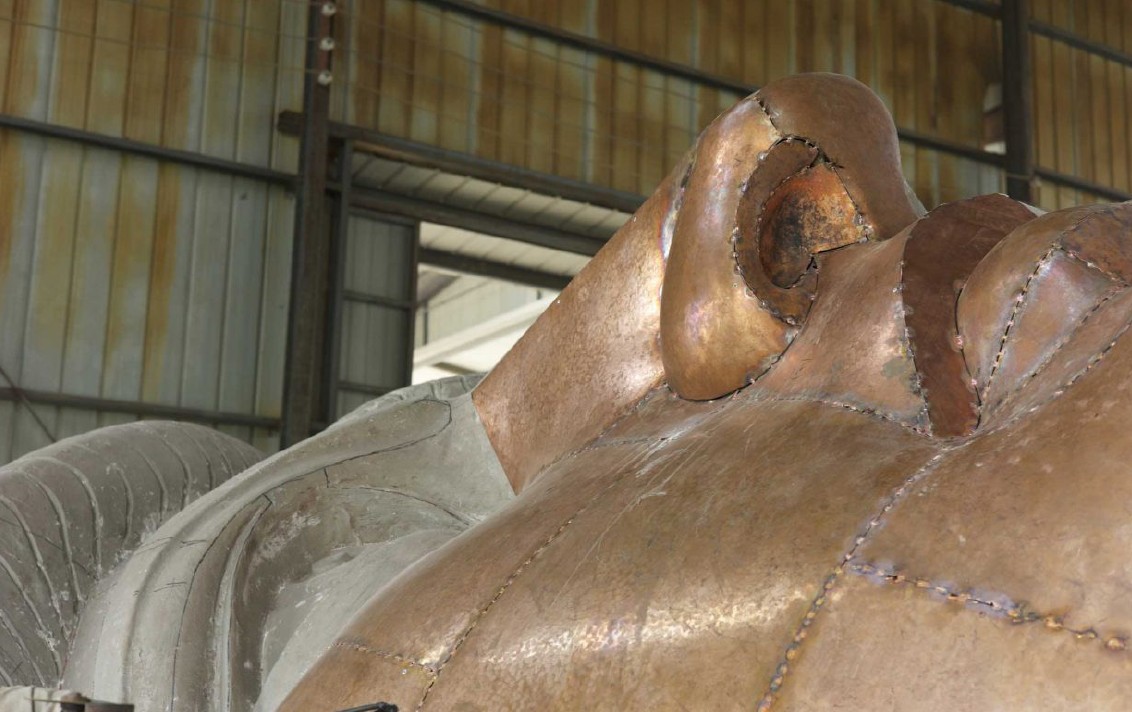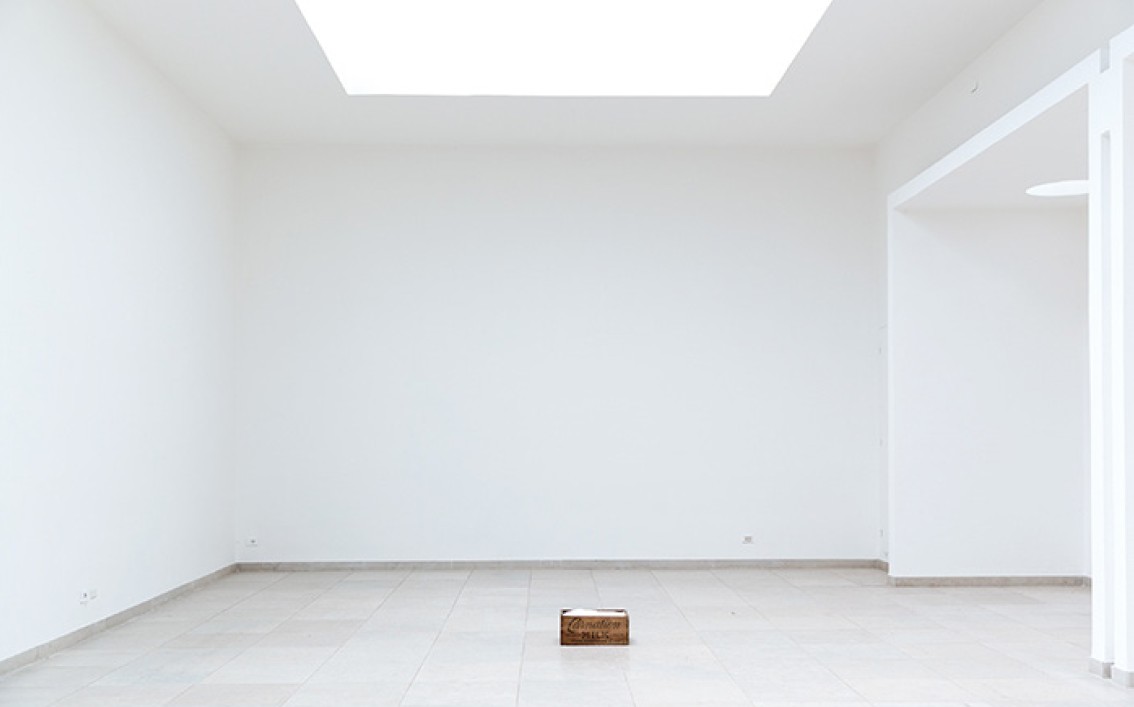OMR's recently formed cultural space LAGO/ALGO appoints Jérôme Sans as creative director
SOUTH SOUTH interviews Sans to find out the details about the first curated show in his new role and his vision for the space.
LAGO/ALGO is a recently established living and cultural hub located in the heart of the Chapultepec forest, the green lung of Mexico City and the largest urban park worldwide. The venue, inaugurated in Spring 2022, was founded by Cristobal Riestra (Owner & Director, OMR) with Joaquín Vargas Mier y Terán (CEO, Grupo CMR). Read our interview with its newly appointed creative director.
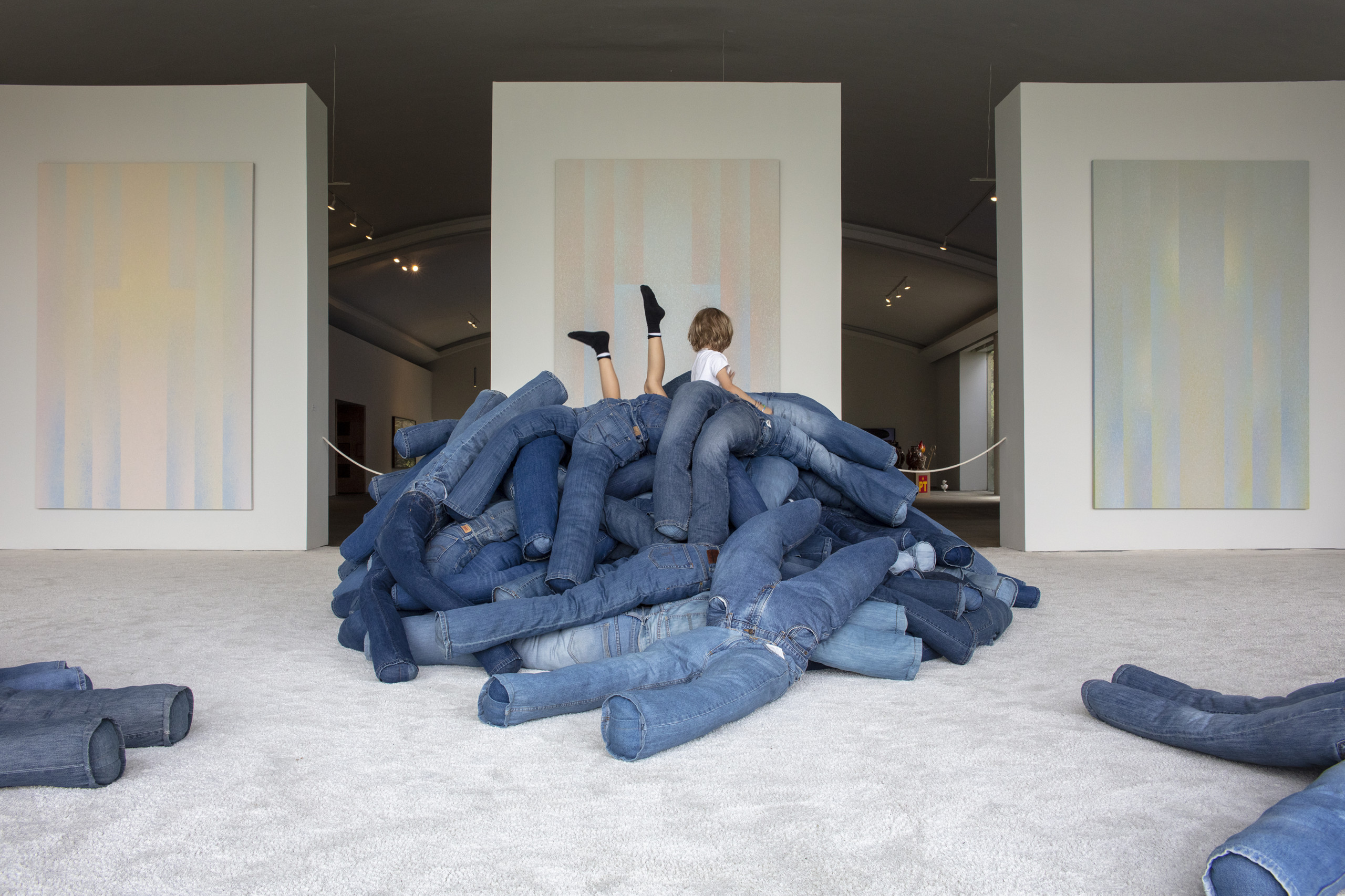
Children play and interact with textile installation by Pia Camil in the exhibition Form Follows Energy, with paintings by Ana Montiel also on display. Photo courtesy of LAGO/ALGO ©Ramiro Chaves.
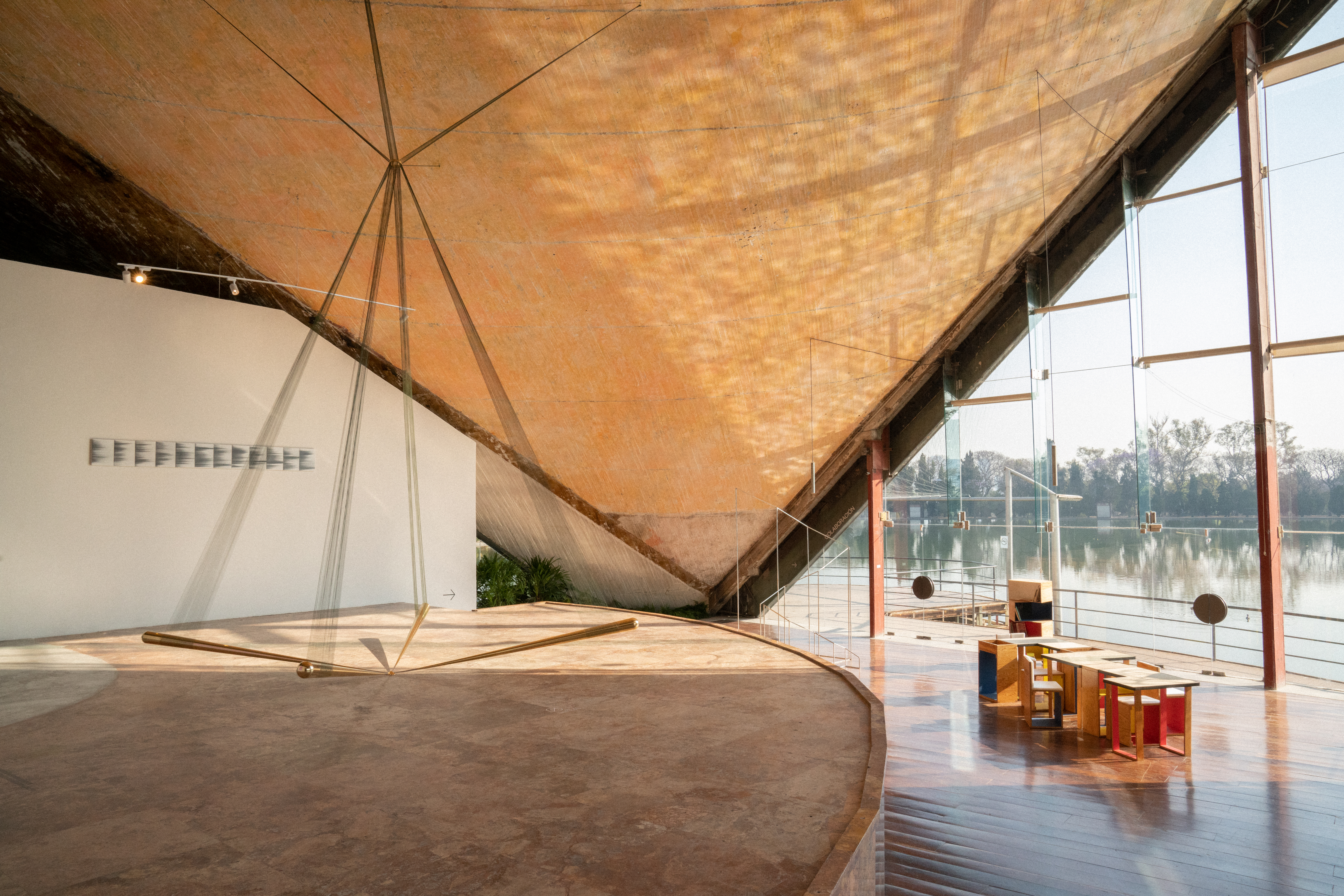
Salón Acanto overlooking Lago Mayor, with artworks by (left to right): Mario Garcia Torres (Mexico), Artur Lescher (Brasil), & Torolab (Mexico). Photo courtesy of LAGO/ALGO © Jose Ignacio Vargas.
SOUTH SOUTH (SS): For our readers from across different regions who may be being introduced to your work for the first time, please share more about your art world journey, particularly touching on Palais de Tokyo in Paris and Ullens Center for Contemporary Art ?
Jérôme Sans (JS): Everything started at the age of 18, after meeting by chance one of the leading French art critics, I understood that I was interested to work and fight for the culture of my time and participate actively of the revelation of artists of my generation. At that time, they were only a few art galleries, almost no museums showing the vocabulary of what was happening in the world. The art world was tiny in scale. It was another time.
In 1981, at the age of 21, together with Jean de Loisy, we set up a non-profit art association to present emerging artists of the French scene. Two years later, after having curated exhibitions in a cellar, the back of a shop, of a bookstore, a maid’s room, Jean was hired by French Ministry of Culture to direct an art institution, I decided to make my own route and went to the United Kingdom with some slides. I was writing for Flash Art and other art magazines. After a week there, where I called and met most of the directors of London’s contemporary art institutions without knowing them before, I manage to convince the director of the Riverside Studios which was at the time the most advanced, underground and interdisciplinary London institution to do a project. This institution helped me to include four other English contemporary art centres to collaborate together for a traveling exhibition around the new generation of French artists that was titled NEW FRENCH PAINTING. For a year, I toured with this exhibition through England and gave lectures in all the art schools, including the famous Courtauld institute in London. In the ’80s and ’90s, I was one of the first independent curators in Europe to experiment with new forms of exhibitions outside the institution in places of reality (airports, apartments, shops, districts, on the road, rural landscapes…). I was interested in bringing to light new artistic scenes at a time when there were no structures that were interested in these new generations.
At this same period, I began to meet Chinese artists in France through Yan Pei-Ming and then Chen Zhen with whom we made an unfailing friendship. In July 1990, I accompanied these artists for the first exhibition of Chinese avant-garde art in France: Chine demain pour hier (1990) curated by Fei Dawei in the village of Pourrières in the South of France. It allowed me, alongside Yan Pei-Ming and Chen Zhen, to meet Cai Guo Qiang, Yang Jie-Chang, Huang Yong Ping, Gu Wenda, Hou Hanru and the composer Chen Qiqang. I have developed a very strong relationship with them and with the Chinese art scene more broadly. In the 1990s, I was part of a collective of curators, mainly Americans (among them Peter Doroshenko, Silvia Kubinia, Pedro Alonso…), and I participated in a new institution’s model in Milwaukee with the Institute of Visual Arts where we presented together for the first time in the United States a whole new generation of artists exclusively through monographic exhibitions produced there (Maurizio Cattelan, Steve Mc Queen, Pascale Marthine Tayou, Pierre Huyghe, Erwin Wurm, Philippe Parreno, Kendell Geers, Joachim Koester, Lars Nilsson, Kim Sooja, Annika von Hauswolff and Martin Paar amongst others). Then, after making other different exhibitions and biennials in different countries and continents, and since it was impossible for me to enter any French institutions because I didn’t get the specific degree, finding the models of most institutions too rigid and outdated, I decided to build “mine”.
With Nicolas Bourriaud, we co-founded the Palais de Tokyo in 1999 and directed it from 2002 to 2006. The idea was to develop a new model of institutions, a model with no fixed rules, adapted to the way people were living and to the current context. Not just an institution but a place to live, totally open to the outside world. An institution as an open platform, a living body, an agora where everything could be debated and shown. Different forms could be exhibited, always in dialog with others, in a permanent flux. An engaged place with a position towards society. Not just another show box. Programming like you do in a daily paper, presenting in challenging forms, inventing a new approach to mediate what we were doing, showing, welcoming by the door and at the camping car front desk, communicating with only digital viral forms, as it was done at the time in the music industry. We helped at the time to bring back international attention to Paris and to highlight in an international context a whole new generation of French artists (Adel Abdessemed, Kader Attia, Laurent Grasso, Loris Gréaud, Tatiana Trouvé, Barthélémy Toguo, Leandro Erlich…) always in dialogue with global artists. Nicolas and I left Palais de Tokyo in 2006 as its top. We invented our ending before opening it. We wrote in the DNA of the place that every director should not stay more than four to six years maximum, in order to always leave the room to new independent curatorial voices. A place with only “guest directors/editors” that can every time completely refresh it from inside from the day they enter.
Thereafter, I went back in the north of England in Newcastle for a year in half as a director of programs to Baltic Art Center to help to “reboost” one of the largest contemporary art institutions in Europe.
But life is an eternal boomerang. As China opened up to the West and as many art professionals ran to China to discover this vibrant art scene, in 2008, I was appointed Director of the UCCA in Beijing to develop the first private contemporary private art institution there that had just opened one month before. Building, or shaping this totally new institution in China at the time, I felt that I had the chance again to leave a cultural historical momentum. The new step where China was opening its door to the west. Here the idea was to help China to make their own model in a global context. The idea was to create a place, where for the first time could be exhibited the Chinese art scene with international standards and where historical Chinese artists and the new generation of artists which appeared in the 1990s could be shown within a dialogue with international artists. This place has somehow given birth to all the Chinese contemporary museums.
To sum up, I am interested in producing or co-producing new cultural adventures. Building new models of institutions connected with the time we are living in and keeping redefining the notion of “exhibition”. Providing challenging frames for artists and audiences. As an artistic director and curator, my aim is to put artists back at the heart of society, at the heart of the debate and to give a voice to those who push limits to reinvent the world. My curatorial practice is rather transversal. Always starting from the art field but connected, in dialog with fashion, architecture, design, music, cinema, performance, and other crossover areas. I am always trying to find pioneering ways to approach and discuss contemporary art. Most importantly, for each project I am as interested in the cultural adventure as in its human dimension.
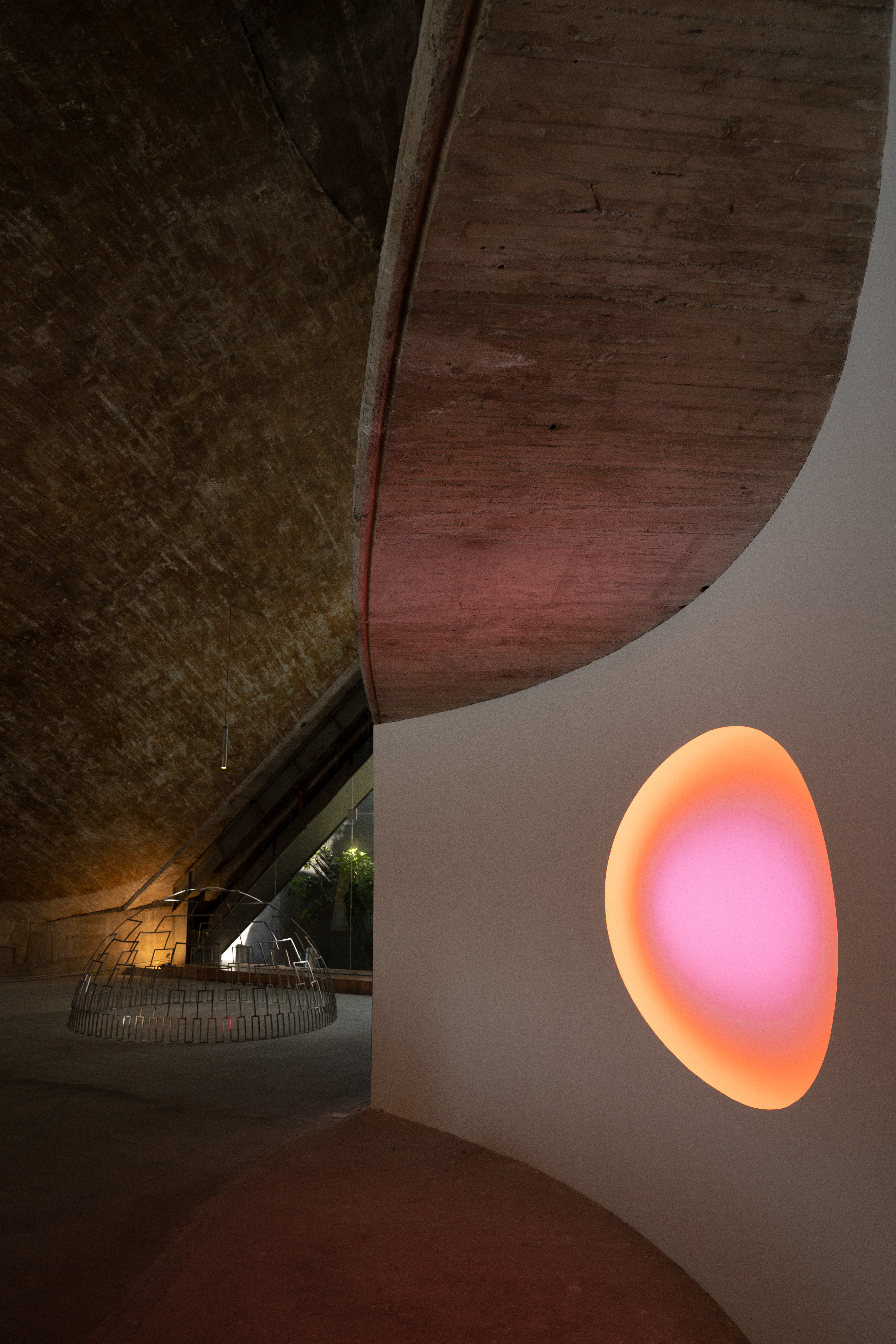
Foreground: James Turrell; Background: François Bucher in Form Follows Energy. Photo courtesy of LAGO/ALGO © Jose Ignacio Vargas.
I am interested in producing or co-producing new cultural adventures. Building new models of institutions connected with the time we are living in and keeping redefining the notion of “exhibition”.
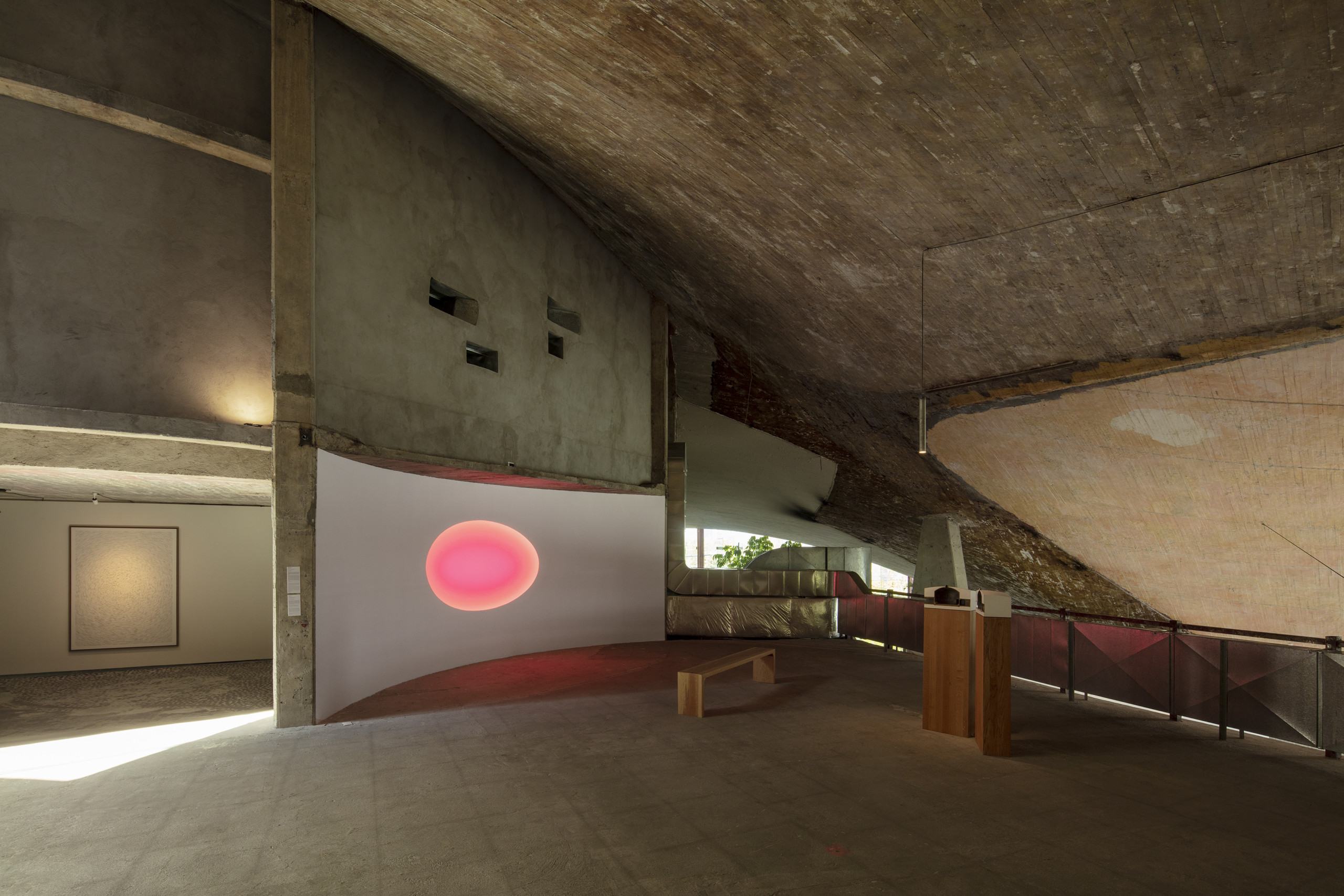
James Turrell & Pablo Dávila in Form Follows Energy. Photo courtesy of LAGO/ALGO © Ramiro Chaves.
SS: You recently joined the OMR team as the creative director of the relatively newly formed cultural space LAGO/ALGO. The project has been described as a “vibrant laboratory for new social and cultural models enlightened by the most radical contemporary practices.” Could you share more about the framework for LAGO/ALGO and what do you hope it will bring to the cultural landscape of Mexico City?
JS: Mexico is certainly one of the most vibrant scenes now and has all the keys to become a major player on the international art scene. After two years of lockdown, LAGO was really the right place to develop. An iconic building of the 60s within one of the largest urban park in the world, Chapultepec. Designed by the architect Alfonso Ramírez Ponce when he was only 24 years old, the restoration work revealed the unique asymmetric and parabolic structure of this masterpiece of concrete architecture sitting by the lake inside the park. It is by itself a real destination where you immediately reconnect with nature and where time has another dimension. A free and open place for everyone to spend time.
Restoring all the conceptual power and utopian character of the original project, LAGO is a hybrid place where art, culture in general are at the centre, an open platform of dialogues, exchanges to reinvent the world. A world definitively connected to nature, concerned with sustainability. A place to live where art and life are unified. Lago is not a fixed model but in permanent flux, like a snowball, it will mutate, change through time, adding regularly new usages, forms of projects, include various new actors. It is not an art center, a museum or the extension of a gallery that multiplies successive exhibitions, but a new space for living and sharing. Punctuated by permanent flow of activities and events, we want to give back the voice to the artists, to the creators. We hope that LAGO will be a platform for the best local artists in a global dialogue, a platform deeply connected to nature that embraces today’s lifestyle and fundamental contemporary issues, leading the way towards a sustainable future. It marks the coming together of the best the past has to offer and an optimistic projection into the future.
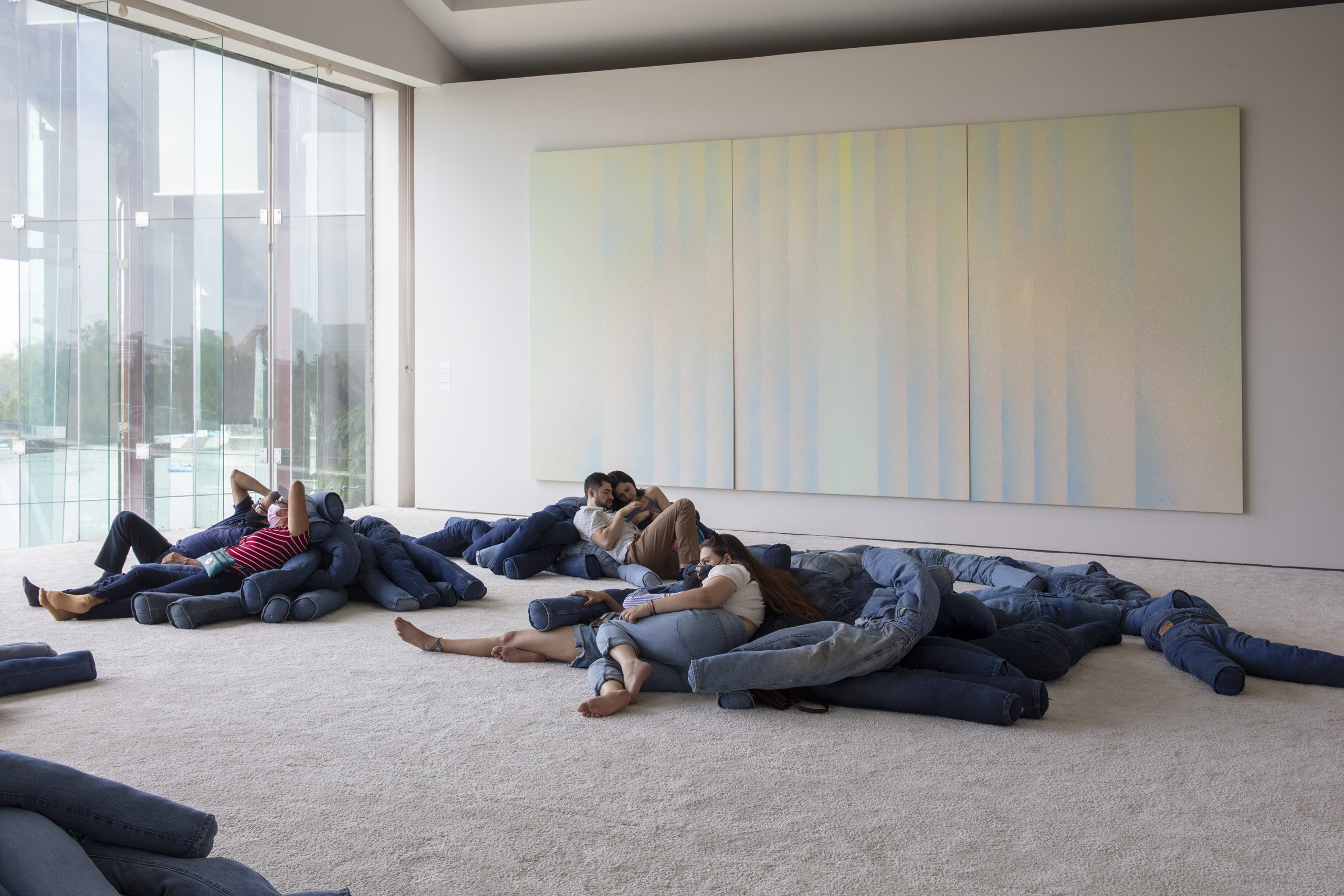
LAGO/ALGO visitors taking a break to relax in the exhibition Form Follows Energy with textile installation by Pia Camil and paintings by Ana Montiel. Photo courtesy of LAGO/ALGO © Ramiro Chaves.
We hope that Lago will be a platform for the best local artists in a global dialogue, a platform deeply connected to nature that embraces today’s lifestyle and fundamental contemporary issues, leading the way towards a sustainable future.
As your introduction to the space you will be curating the show Shake Your Body opening in early September. What are the main thematic and curatorial threads for this show? Do you see these as possible extensions of the core vision and energy for LAGO/ALGO?
JS: More than an exhibition, Shake Your Body is the second chapter of the development of the place and acts somehow as a manifesto of what this place is, an extension of LAGO/ALGO’s energy and core vision. In fact, every exhibition, every project will. This exhibition includes installations by 7 internationally renowned artists: Andreas Angelidakis (Greece), Stefan Brüggemann (Mexico), Vivian Caccuri (Brazil), Pia Camil (Mexico), Rafael Domenech (Cuba), Alicia Framis (Spain), and :mentalKLINIK (Turkey). But most of the works shown have been specifically produced for the place and in Mexico City in order to promote local producers and artisans as well as to reduce the carbon print. Shake Your Body functions as living platform to activate, connecting various communities and reflecting on a global scale whilst acting locally towards transformation. Focusing on the exploration of what makes us connect with one another, Shake Your Body shifts the traditional passive contemplation in exhibitions towards an invitation for all to experience the common, act for change and reconnect to a more inclusive and dynamic social body.
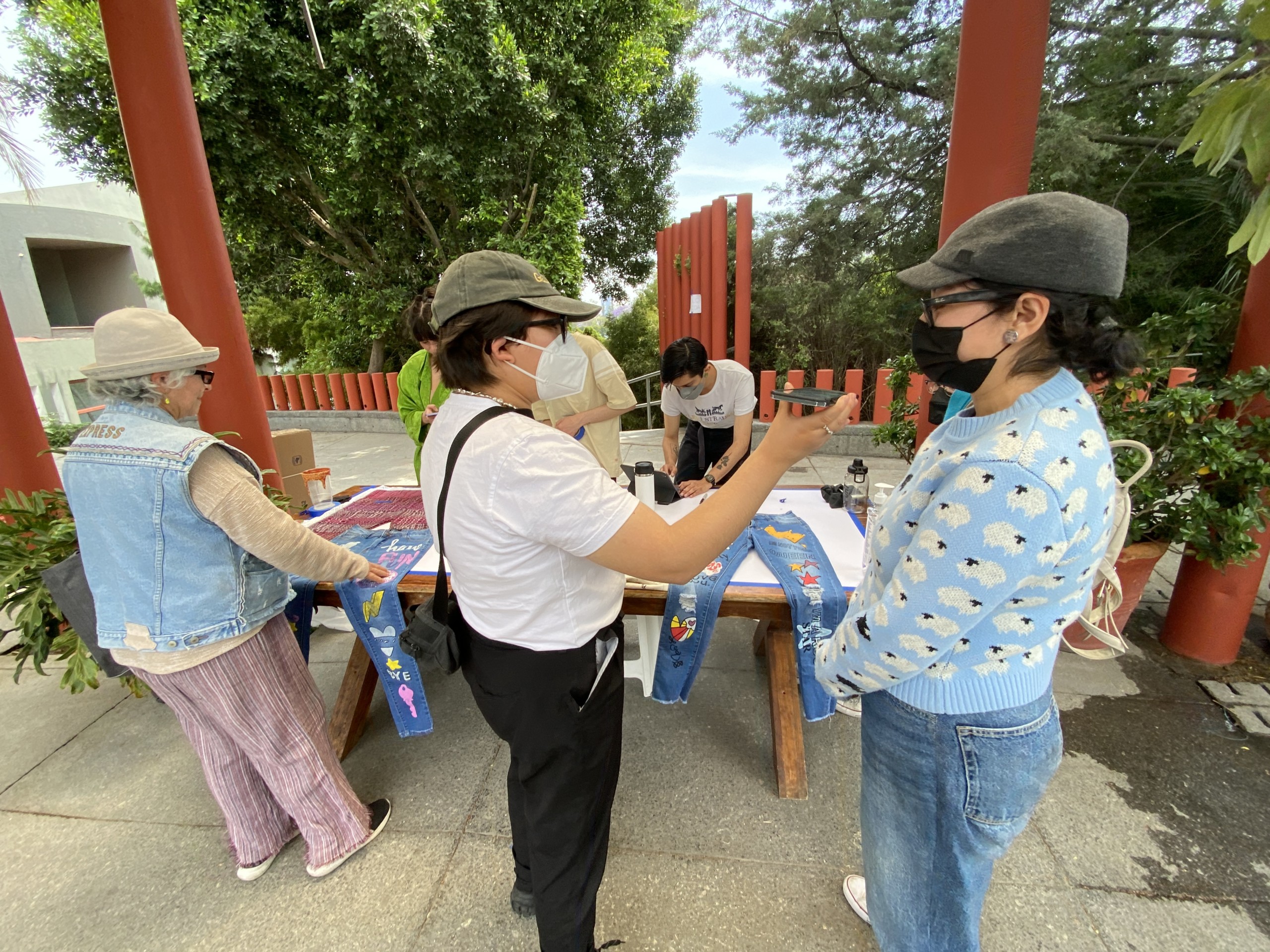
Public programming: Interchange of clothing items with Mexico City residents to make part of Pia Camil’s collective clothesline: Air Out Your Dirty Laundry, later installed from the flagpoles at Rockefeller Center in collaboration with MASA Galería. Photo courtesy of LAGO/ALGO © Alonso Araujo.
More than an exhibition, Shake Your Body is the second chapter of the development of the place and acts somehow as a manifesto of what this place is, an extension of LAGO/ALGO’s energy and core vision.
SS: Could you shed some light on the artworks that will be part of the show? Are any of them anchor points or key navigational points for exploring the overall narrative?
JS: Again, every piece exhibited has been specifically conceived for the show and is an essential part of the global narrative. What’s important to understand is that it brings together artists from 6 different nationalities that will compose an overall experience within the exhibition. Of course, Pia Camil’s reactivation of her piece Bara, Bara, Bara, monumental sails sewed together from a multitude of coloured and printed t-shirts bartered in the markets of Mexico City, marks a key connection between the local and
the global.
SS: What are your future plans for LAGO/ALGO that you would like to share with our audience? Are there any other exhibitions or projects in the pipeline?
JS: Along with the opening of the exhibition on the 3rd of September will take place the inauguration of the new Plaza LAGO/ALGO at the entrance, designed by the designer/artist Fabien Capello. This is one of the many projects in the pipeline aiming at continuously transforming the site with artists in order to constantly adapt to its people and its environment. To be continued.
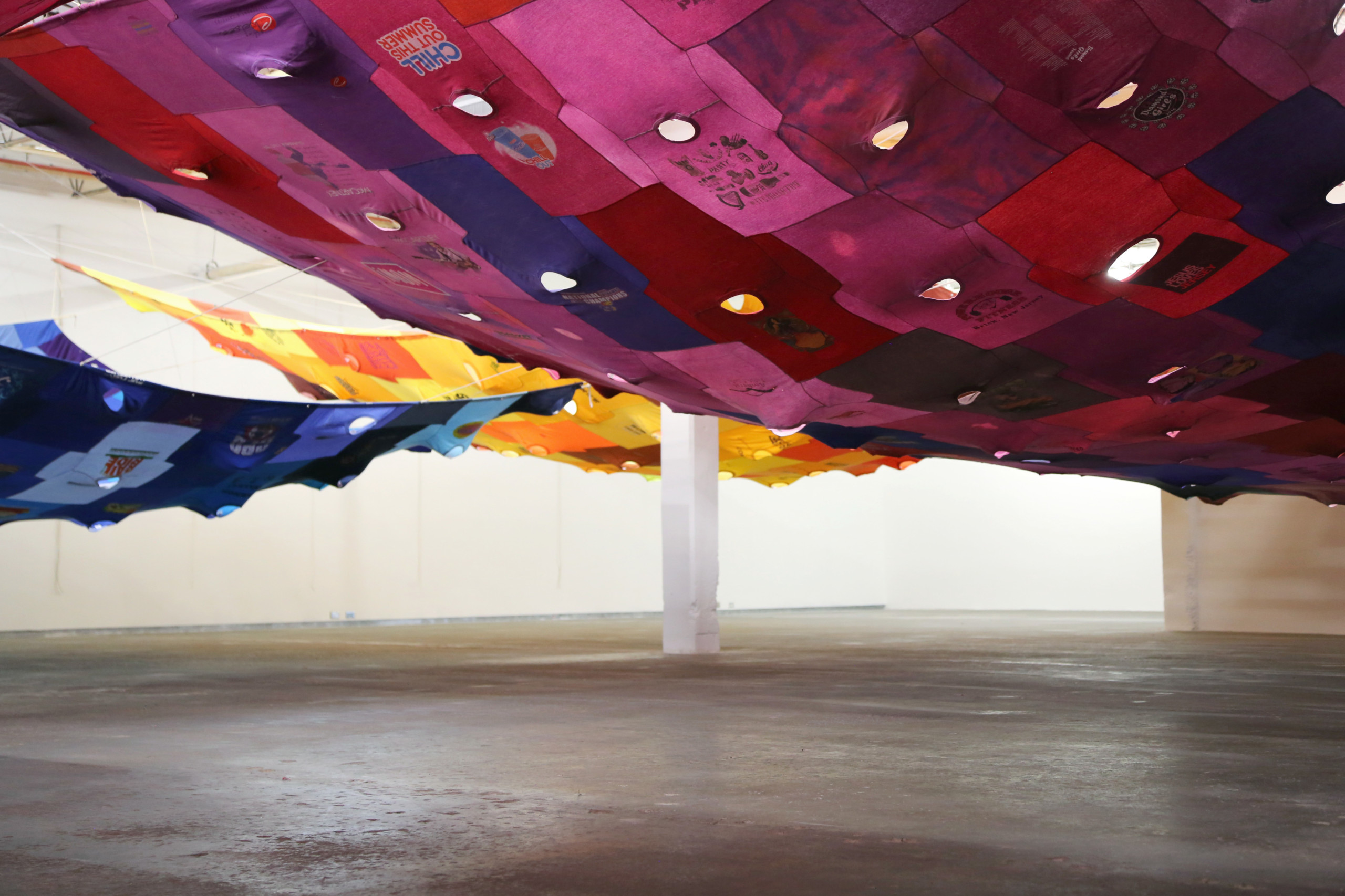
Pia Camil, Bara, Bara, Bara, Dallas Contemporary, Dallas, Texas, 2017

